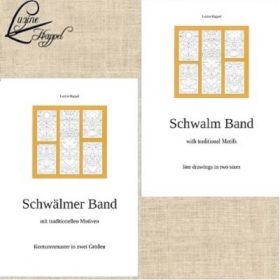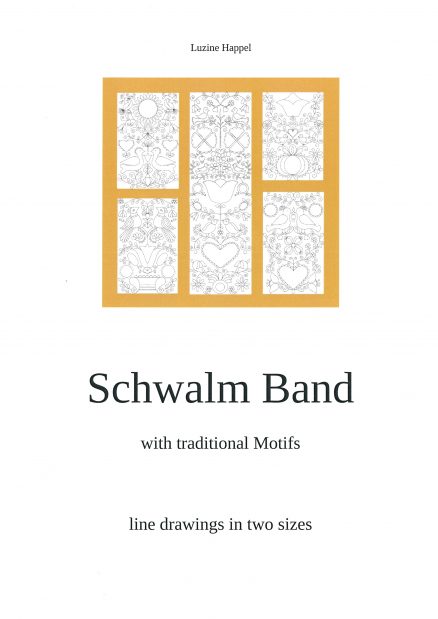The “Winter Tree with Berry Bowl” is a charming little seasonal motif. The design by artist Gudrun Hartwig leads from the bare autumn tree, through the fir branch-like arrangement with the star-shaped tip and other decorations, to the Christmas bird feeder.
All outlines were embroidered with slanting wide stem stitches (Early Schwalm Whitework, page 5). To emphasize the fir tree character, I chose a pattern from the book Limetrosen II (page 21).
In contrast to the dense and three-dimensional pattern, the star was first embroidered with the delicate rose stitch variant (see: Advent Calendar 2019 – No. 1 Images 3 – 5) and then covered with a spider web(Early Schwalm Whitework, page 61).
The little birds were decorated with chain and blanket stitches.
The titmouse ring was embroidered with individual chain stitches (= daisy stitches) (Early Schwalm Whitwork, page 79).
The apple was given a simple pattern with the “Close, 2-thread weaving” (Early Schwalm Whitework, page 19).
The berry bowl was filled in the lower section with “raised band stem stitch” (Early Schwalm Whitework, page 62). The edge was decorated with satin stitches.
The berries were embroidered as blanket stitch eyelets.
The “Winter Tree with Berry Bowl” also looks very appealing as a window decoration.
You can order the pattern as a PDF for €5. Slightly modified versions are also available, featuring a bird perched on the bowl instead of berries, a drawing showing only a feeding bowl, and a design showing a pecking bird instead of a berry bowl.
You can find more Christmas embroideries, designed by the artist Gudrun Hartwig, here:
Advent Calendar 2016 – No. 23 – “Tiny Fir Wreath”
Advent Calendar 2016 – No. 22 last image- „Hellebores and Star“
Fabulous Pictures in Whitework – “Mother Holle”
Adventskalender 2019 – “Christmas Wreath”
Advent Calendar 2019 – No. 24
Advent Calendar 2018 – No 6 “Garden Angel”
Advent Wreath with Balls










































